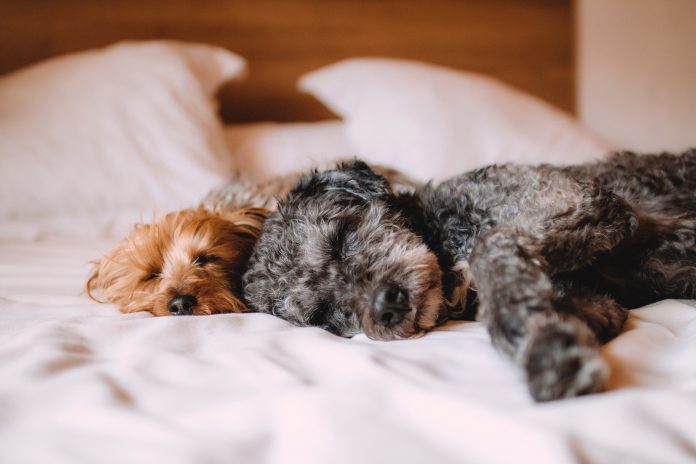
Guest expectations continue to rise in the hospitality sector. Consumers not only want to have a luxurious travel experience, they also want to bring their pets along to join in on the fun. And with home-sharing companies providing competitive pet-friendly opportunities, hotels are rising to the occasion.
According to the American Pet Products Association, pet industry spending in 2018 was $72.56 billion—an all-time high. Millennial pet owners are willing to purchase expensive food, designer bedding, and yes, even high-end travel experiences, for their pets. Many hotel brands across the U.S. have created attractive pet amenities to appeal to this demographic, including pet concierges, pet-centered room service menus, and even dog massages.
While pets and their associated amenities can help business boom, it may also cause something else to boom—pest pressures. If hoteliers include animals in their business plan, it’s important they also prepare for pests.
Pests to Look Out For
Fleas
Once cats and dogs are allowed on the property, the fleas that may arrive with them can become a problem for the first time. Fleas are small and difficult to see, and they multiply very quickly. In severe infestations, numerous fleas at a time may start jumping onto hotel guests, who may report being bitten.
To help prevent this, hoteliers should ensure all guestroom bedding—both for pets and humans—be washed and dried at 120+ degrees immediately after each stay. Housekeeping should also wash couch and chair cushions, since many pets will lie on these items as well. It’s important that housekeeping regularly vacuums under beds. While this space may be overlooked in pet-prohibited hotels, it’s a common pet hang-out spot and could be harboring fleas in immature life stages.
Cockroaches
This pest is already included in pest management plans, but allowing animals into a hotel can potentially increase cockroach pressures. It is therefore important to insure that pet food crumbs are cleaned regularly, both in guestrooms and in other spaces where animals eat. Treats kept up front for pets should be stored with a tight-fitting lid, and vacuums should cover the area beneath heating register covers, behind furniture, and in other places where pet food can be left accidentally. Hoteliers should also take care to repair any cracks and gaps around doors or windows that may allow cockroaches to enter the hotel. If pet doors are on the property, they should be properly sealed.
Flies
This is another pest that hospitality professionals already manage, but the fly population may increase with the presence of pets. This is especially true in outdoor spaces. Flies are attracted to food, organic matter, and moisture, so regular maintenance of pet common areas and walking zones is necessary to help prevent flies from moving in on guests. Hoteliers should work with an HVAC professional to create positive airflow in the hotel, so flies and other insects are pushed away, not sucked in, when doors open.
Create a Solution
Before welcoming pets onto the property, hoteliers are advised to work with a pest management professional to create a plan that stands up to increased pest pressures. An integrated pest management program can be tailored to the unique needs of the property. This type of program focuses on techniques such as sanitation, maintenance, and exclusion, so that hospitality professionals can create a safe and welcoming place for guests and their pets. Once a plan is in place, housekeeping and staff should be trained on the warning signs of common pests, as well as how to handle a pest encounter.
By becoming a pet-friendly property, brands have the opportunity to create unique pet-centered amenities that can help grow revenue and brand loyalty. With the help of a pest management professional and a diligent staff, hospitality professionals can provide an excellent experience for humans and pets alike.











